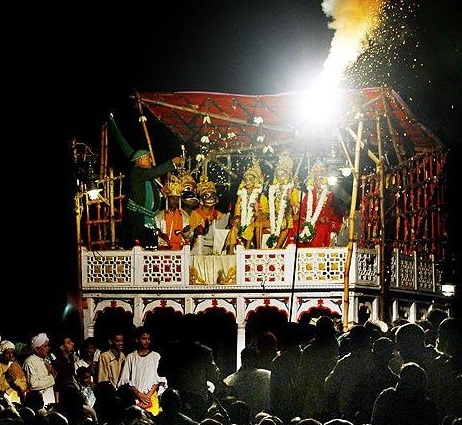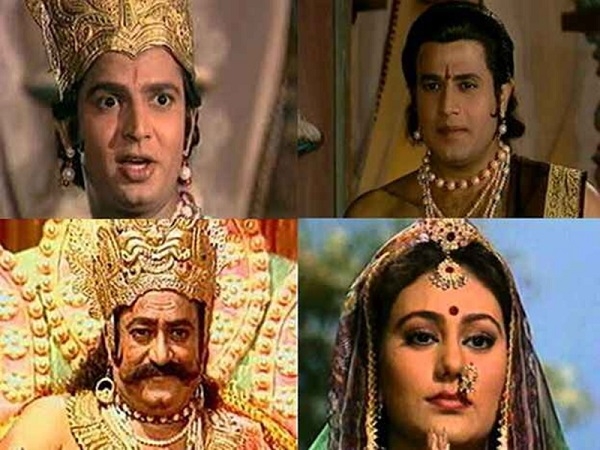Ramayana tradition in northeast Bharat
Total Views |
During his entire life, there is seldom any reference to Sri Rama traveling to northeast India as against Sri Krishna. His entire sojourn was from Ayodhya to Sri Lanka through the thick Dandaka forest covering the present states of Uttar Pradesh, Madhya Pradesh, Chhattisgarh, Maharashtra, Telangana, Andhra Pradesh, Karnataka and Tamil Nadu. One finds ample evidences of his presence in these states too. But that is not case here in the northeastern states.
Nevertheless, there are evidences to prove the presence of Ramayana tradition among the various janajati people and communities in the northeast Bharat. Most surprising is the presence of a folk lore among the Mizo people (90 percent of them have been converted to Christianity) expressing their belief that Rama and Lakshmana (whom they call as ‘Khena’) taught them the art of cultivation of rice!

Sri Ram is worshipped and adored as national hero of Bharat, an epitome of ‘Purushathartha’ and his stories find diverse manifestation all over the country and even abroad. Even the famous Muslim poet Mohammad Iqbal, who composed ‘Saare Jahan se Achcha Hindostan Hamara’, described Sri Ram as ‘Imam-e-Hind’ and many a Muslim today accept him to be so! During the late 80s, a seminar on Ramakatha Traditions in the Northeast Bharat was organized under the auspices of Guwahati University wherein scholars from various states of the region participated and it was then this presence of Ramayana became known to the people.
Rest of Bharat is yet to connect itself emotionally with the people of northeast though the later consider them as ‘True Bharatiya’ and they have proved their loyalty to Bharat during the 1962 Chinese invasion and on many other occasions. But it is most unfortunate that we still consider them as different from us, mostly due to their facial features and languages. Examples of such discrimination galore in national capital and other metro cities.
However, they have a treasure trove of evidences and that too live ones, to prove their strong links – emotional, ethnic, political and cultural and linguistic etc. with the rest of Bharat. The references to places, people and plants of the Mahabharata period are amply found in these northeastern states. And now, this seminar had brought to fore its connection to the Ramayana tradition which is older to Mahabharata in its historicity.
The story of the Prince of Ayodhya finds its way in the folk art, folk lore and folk dances of the region. There is ample scope to believe that the Ramayana Tradition must have traveled to the hills and dales of the enchanting northeast Bharat through the South East Asian region. This was later adapted by the people making some changes to suit their cultural surrounding and religious beliefs. Assam has a very rich Ramayana tradition preserved in oral and written form and also as a performing art. The famous Ramayana written by Madhav Kandali is still relevant to the people of Assam and held in great reverence to that of Valmiki’s work.

However, what is more interesting is the presence of Ramkatha among the various janjatis of the region. Karbis, living in Karbi Anglong district of Assam have a great tradition of Ramayana which is basically oral. The story of Rama is known as ‘Sabin Alun’ and it is set in the environment of Karbi customs and culture, traditions and beliefs and of course, their way of life.
I was first introduced to the ‘Karbi Ramayana’ by Swami Bangovind Parampanthi of Assam Vishwa Hindu Parishad. The great savant Lakhiman Guru who worked among the Karbi people, had revived this tradition. The Karbis believe that they are descendants of Sugriva, the King of ‘Kishkindha’ who helped Rama in finding Sita and eliminating Ravana, the King of Sri Lanka with his army of ‘Vanara’.The name ‘Karbi’ is also supposed to be a corrupt form of ‘Kaveri’ from where these people believe to have migrated to their present habitat.
The people who can recite this Rama’s song are held in very high esteem in the Karbi society. According to Karbi tradition, Rama goes to his would-be Father-in-Law’s house and works there in fields etc. to prove his competence as a ‘good’ groom who can take care of his daughter. Tiwa people in Assam also have oral tradition and preserve Ramakatha as ‘Ramayan Kharang’. The Rabha people have a folk song that says “let’s go and see the horse of Sri Rama’.
Khamtis of Lohit district in Arunachal Pradesh too have their own version of Ramayana which seems to bear the influence of Jataka Tales and Buddhist philosophy. The Khamtis are Buddhists too. Their Ramakatha is known as ‘Lik Chaw Lamang’. The Mismis, another janjati in Lohit district also has a folk tale that has closeness to Ramakatha. The Aka people in Arunachal’s Kameng district also relate them to Jambavana, a lieutenant in Rama’s Army.
In Meghalaya, a Christian-dominated state, the story of Rama is equally popular. Especially, during the first telecast of Ramayana Serial on Doordarshan in 1987, most people in Meghalaya watched it with utmost devotion and concentration. The Khasis, Jaintias and Garo people have their own versions of Ramayana. In 1900, the founder of the Seng Khasi movement Jeebon Roy, brought the story of Rama in Khasi language first.
Similarly, Ramayana was translated in Garo language by Redin Momin and was published years after his death in 1992. Among the Jaintia people there is tradition: If twin boys are born in any house they are named as ‘Rama and Lakhon’. But more interesting is the belief of people in Ri-War area. This is an orange producing area and the oranges are sweet because they believe that Sri Rama had brought them from Sri Lanka and dropped them in this area!
Most interesting folklore is available in Mizoram which has now adopted Christianity. Here Ramayana is a story of ‘Khena and Rama’. There are various characters in this story such as Khena, Hawlaman, Luppirabon, Lucarina that can be identified with Lakshamana, Hanuman, Mahiravana and Ravana himself. The Mizo folk tradition accepts Ram and Khena as ‘Gods’ and believe that they taught them how to cultivate paddy. Rice is used in various religious ceremonies and in invocation to rice these two characters are invariably mentioned.
The invocation to rice goes like this:
While the earthworm took earth for shaping world,
While Mother Nature modeled the world,
You were created by Khena and Rama
In Tripura also we find a rich Ramakatha Tradition. ‘Rajratnakara’ a historical chronicle composed in 15th century mentions Puru Sena, a King who was contemporary to King Dasharatha of Ayodhya. He had attended a sacrifice ceremony performed by Dasharatha at Ayodhya. King Ramganaga Manikya of Tripura was the ardent devotee of Sri Rama.
Manipur, which has a dominance of Vaishnava sect, has rich Ramayana tradition preserved through kathak, folk dances, kirtan, and songs. The ‘Jatra’ tradition in Manipur also preserves this story as ‘Lairik-Thiba-Maiba’.
However, in the advent of Christianity these historical records were either destroyed or made untraceable. This can be a best cementing adhesive to bridge the emotional gap between the people of northeast and rest of Bharat.
